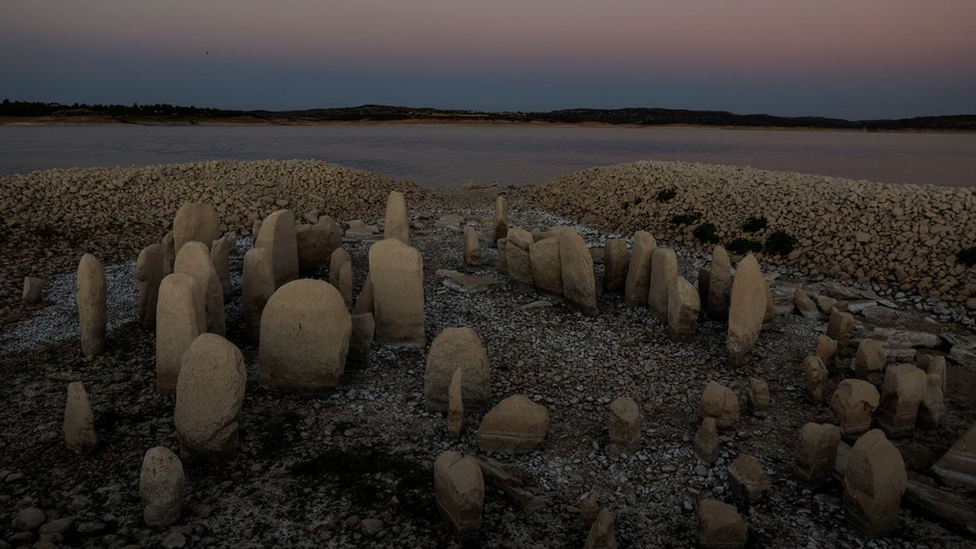Drought reveals 'Spanish Stongehenge'
- Published
- comments

The Dolmen of Guadalperal is now visible because the water in the river has dropped to just 28% capacity
An ancient stone circle nicknamed the Spanish Stonehenge has been uncovered in Huelva, Spain.
Officially known as the Dolmen of Guadalperal, the stones can currently be seen on the corner of the Valdecanas reservoir - but until now they had only ever been seen 4 times before!
They would normally have been buried under water but authorities say the water level has dropped to 28% of capacity allowing them to come to the surface.
That's due to the extreme weather Spain has been experiencing - with extreme heat and no rain causing droughts.
Because of this huge drop in water levels, the ancient stones are visible once again.
Stones placed like this are known as dolmans, but there's still an element of mystery surrounding who put them here and why?
The Dolmen of Guadalperal was first recorded to be discovered by Hugo Obermaier, a German archaeologist in 1926.
The area, however, became flooded in 1953 and since then the stones have only been visible four times.
Scientists are racing to study the stones, known as, Dolmans before they disappear again.
One archaeologist Enrique Cedillo said: "It's a surprise, it's a rare opportunity to be able to access it."
This 'birds eye view' shows what the dry land surrounding the stones looks like, droughts leave rivers dry and the lands around them dry too!
Dolmas are stones, placed vertically that support a flat boulder
There are many sites like Stonehenge and the Dolmen of Guadalperal across Western Europe, but not much is known about how the stones were placed or why.
Some theories suggest they could be ancient burial sites.
- Published3 March 2022
- Published26 October 2018
